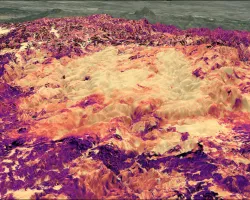- PI: Sean Nolan, SAIC Gemini Inc.
- Co-I: Stephen Ambrose, SAIC Gemini Inc.
SAIC is pleased to partner with NASA on a wildfire applications project that utilizes Artificial Intuition, a Quantitative Complexity Management (QCM)-based computational engine, to pinpoint locations and areas of environmental stress that can lead to elevated wildfire risk. The QCM algorithm is similar to how the human brain processes images and identifies anomalies and patterns that highlight changes, or complexity, in an environment. Identification of key areas of risk can also help predict where prescriptive techniques can be used for risk reduction.
QCM can ingest numerous data sources and cover very large geographical areas with an initial goal of enabling forest and wildland personnel time to plan prescribed burns, anticipate burn potential, and even support post fire burned area response teams.
This model-free approach requires less data and no training to produce useful results, when compared to conventional Artificial Intelligence/Machine Learning (AI/ML) solutions. The QCM approach also allows for integration with traditional AI and ML functions to streamline and accelerate pre-processing, verification, and validation.
SAIC has a legacy of experience with QCM/Artificial Intuition on several technology development programs with the DoD, DHS, FAA and other government agencies and is proud to collaborate with Ontonix (www.ontonix.com) on our approach to test the technique on wildfire risk. Initial efforts will provide historical wildfire case studies that investigate areas of forest system stress (ignition zones). As part of this effort, the Climate Enterprise at SAIC will coordinate with federal, state and local operational stakeholders to verify and validate outputs. Other potential applications of Artificial Intuition include the ability to predict regions of risk due to flooding, drought, extreme weather, and climate change.


